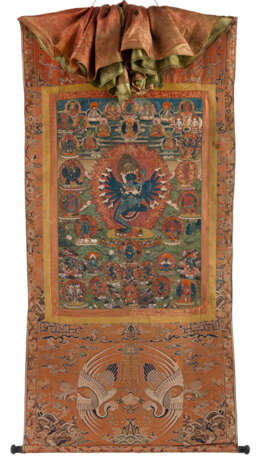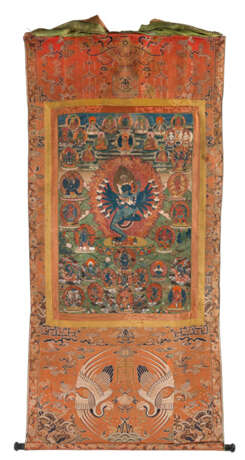Die tantrischen Gottheiten Hevajra und Nairatmya in liebender Vereinigung
06.12.2022 09:30UTC +01:00
Classic
Verkauft
13000EUR € 13 000
| Auctioneer | Nagel Auktionen GmbH |
|---|---|
| Veranstaltungsort | Deutschland, Stuttgart |
| Aufgeld | 29,5% |
Archiv
Die Auktion ist abgeschlossen. Es können keine Gebote mehr abgegeben werden.

ID 875237
Los 40 | Die tantrischen Gottheiten Hevajra und Nairatmya in liebender Vereinigung
Schätzwert
€ 4 000 – 6 000
Tibet, 18. Jh.
67 x 45 (145 x 70,5) cm
| Kategorie des Auktionshauses: | Asiatische Kunst |
|---|
| Kategorie des Auktionshauses: | Asiatische Kunst |
|---|
| Adresse der Versteigerung |
Nagel Auktionen GmbH Neckarstrasse 189 - 191 70190 Stuttgart Deutschland | ||||||||||||||
|---|---|---|---|---|---|---|---|---|---|---|---|---|---|---|---|
| Vorschau |
| ||||||||||||||
| Telefon | +49 (0)711 649 690 | ||||||||||||||
| Fax | +49 (0)711 649 69696 | ||||||||||||||
| Aufgeld | 29,5% | ||||||||||||||
| Nutzungsbedingungen | Nutzungsbedingungen | ||||||||||||||
| Geschäftszeiten | Geschäftszeiten
|









